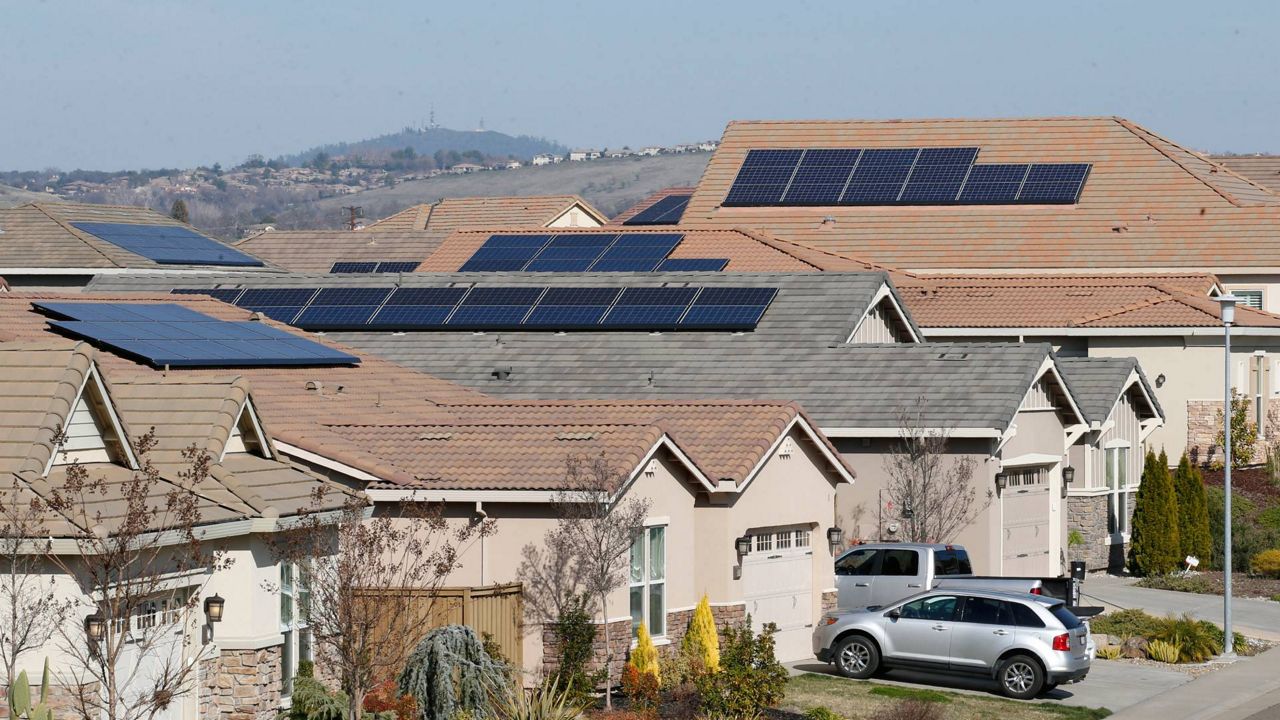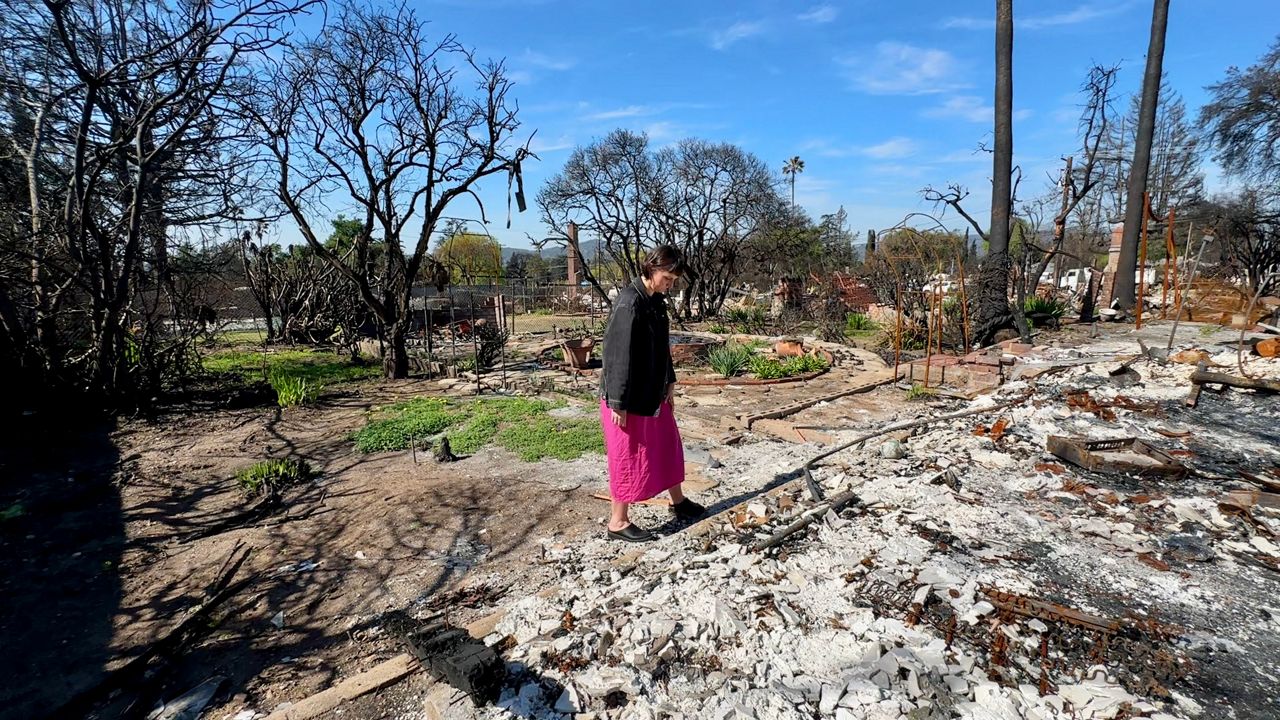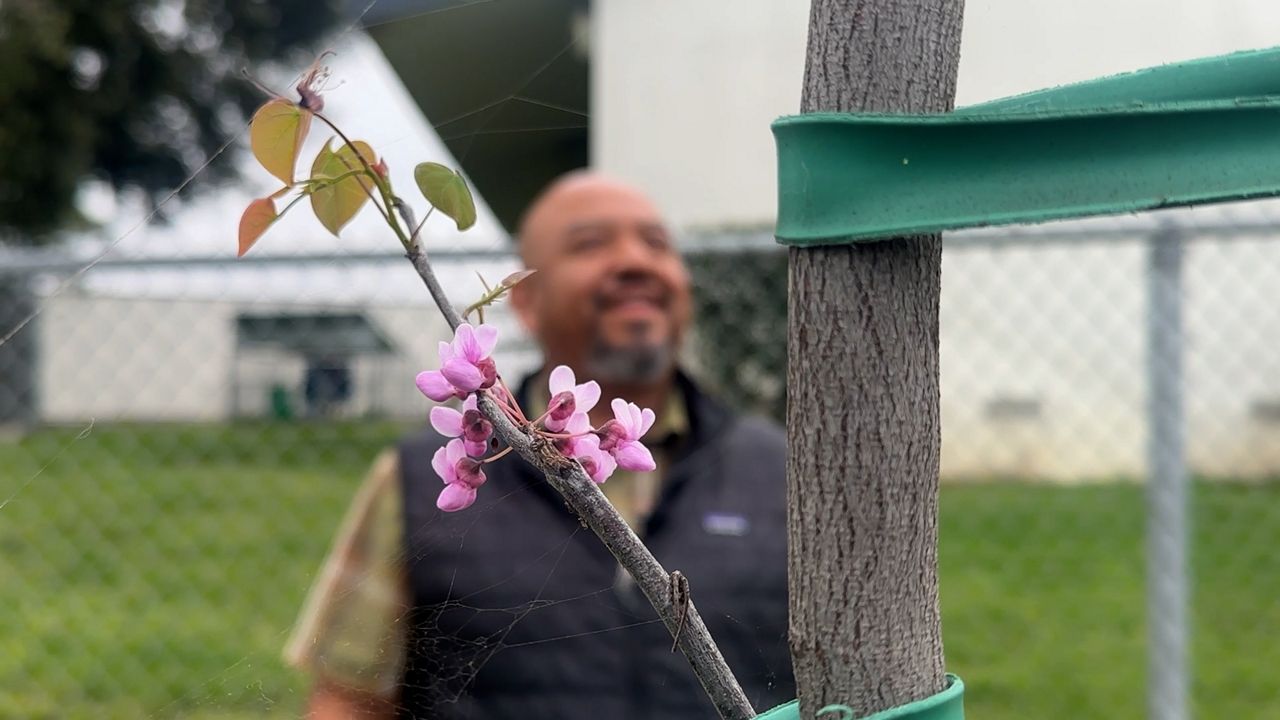SACRAMENTO, Calif. (AP) — California regulators proposed major changes to the state’s booming residential solar industry Monday, including reducing the discounts homeowners with rooftop solar and storage systems get on their electric bills when they sell extra energy back to the power companies.
California’s wildly successful 26-year-old program to get more people to put solar panels on their homes has been at the center of a fierce debate between the state’s major utilities and the solar industry, and the California Public Utilities Commission’s proposed reforms have been highly anticipated.
What You Need To Know
- Californians who decide to install home solar panels and storage systems would get lower discounts on their energy bills under a proposal released by state regulators
- The proposal unveiled Monday would change California's current net energy metering program
- It allows solar customers to sell energy they don't need back into the power grid for energy bill discounts
- Utilities, consumer advocates and some environmental groups say incentives for people who put panels on rooftops are too generous
Power companies say the savings solar customers get from the current incentives are now so great that they no longer pay their fair share for the operation of the overall energy grid.
The changes proposed Monday would reduce those incentives and roughly double, to 10 years, how long it takes Californians to make back what they paid to install the systems. Buying rooftop solar panels and a system to store the power for nighttime use costs about $40,000, according to the solar industry.
The CPUC said the reforms are designed to make the program, known as “net energy metering,” more cost effective and to ensure energy grid operation costs are shared fairly. But the solar industry and its allies warned the changes will make it harder for the state to achieve its bold clean energy targets, including generating 100% of retail electricity from renewable or zero-carbon sources by 2045.
“The proposal will move us backward on clean energy and block many Californians’ ability to help make our grid more resilient to climate change,” Susannah Churchill, western senior regional director for Vote Solar, a political advocacy group that pushes for clean energy adoption.
California launched the program in 1995 with the goal of encouraging more homes to go solar. It worked. California now has 1.3 million solar systems on homes, far more than any other state, according to the solar industry. That number will only grow because since 2020 all newly constructed homes in California must have solar panels.
But as solar panels proliferated, criticism about the program grew. The state's major utilities — Pacific Gas & Electric, San Diego Gas & Electric and Southern California Edison — say the current setup allows solar customers to sell their energy back into the grid for more than it’s worth. They say more needs to be done to make sure solar customers — most of whom still rely on power from utilities once the sun goes down — are paying for all the parts of the energy grid they use.
Power rates include many costs unrelated to energy generation, like transmission, distribution and even wildfire prevention work. When solar households pay significantly lower electricity bills — or no bills at all — they’re contributing less to those things. That means more of the cost is shouldered by other customers, often households and renters without the financial means to install solar. The utilities and the state peg that cost at $3 billion, though the solar industry disputes that number.
The CPUC’s proposal would still allow residential solar customers to sell their excess energy back to the power companies, but at a significantly lower rate. Solar customers would also have to pay a grid charge based on how many kilowatts of energy they produce; it would cost $40 to $50 for most homes.
The charges aren’t as great as what the utilities wanted. The companies and their allies did not immediately comment on the state’s proposal.
CPUC Commissioner Martha Guzman Aceves said the reforms are aimed at creating fairness while ensuring the financial benefits are still strong enough to encourage people to go solar.
Related Stories
The changes would apply to new solar customers. People who already have panels on their homes wouldn’t operate under the new system until they’ve had their panels for 15 years.
But state regulators also want to encourage people with solar panels to install storage systems. It costs about $20,000 to $25,000 for people to put solar panels on the rooftop and another $15,000 to install storage systems. Customers who have storage systems — only a fraction of the overall rooftop solar market — can store the extra energy they make during the day for use at night.
The more customers who have solar storage, the fewer people need to rely on the energy grid — and fossil fuels — during the evening. Under the state’s plan, customers who already have rooftop solar will have access to subsidies of about $3,200 to install storage systems.
Regulators also propose creating a $600 million fund to help low income households afford solar and storage.
A five-member commission will vote on the final PUC reform proposal, likely in January.










